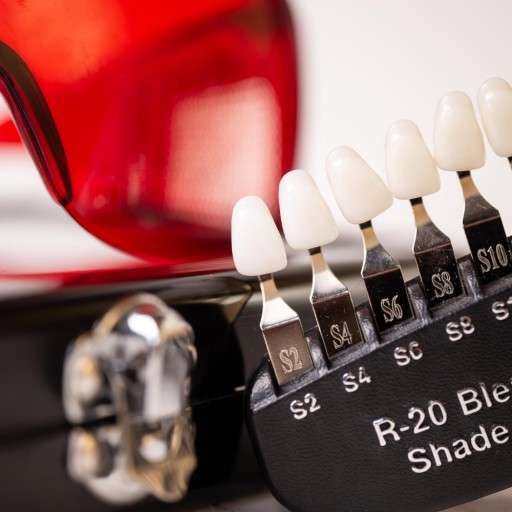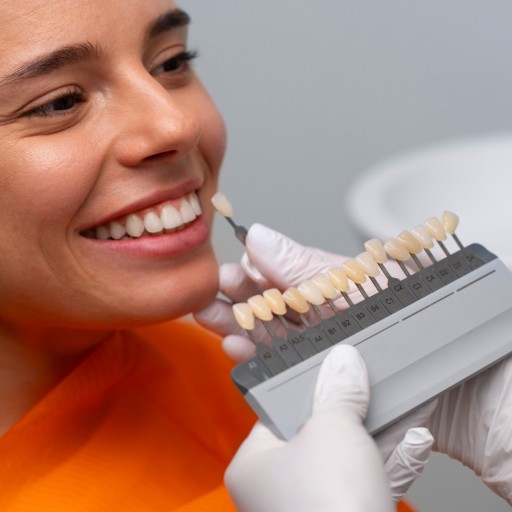Dental Veneers
5 results foundDental Veneers - A Perfect Smile Solution
A beautiful smile can make all the difference in your confidence and overall appearance. However, chips, discoloration, or misalignment of teeth ruins the natural beauty of your smile. Dental veneers offer an effective and minimally invasive solution to restore the look of your teeth and to give you that radiant, flawless smile. In this article, we explore what dental veneers are, the different types available, the procedure, benefits, and everything you will need to know to make a decision on whether veneers are for you.
What Are Dental Veneers?
Veneers are custom-made, thin shells placed onto the front surface of the teeth. Made from tough, high-quality material- like porcelain or composite resin-these shells are attached to your teeth for aesthetic purposes. For various cosmetic flaws, such as discoloration, chips, gaps, and misalignment, these veneers can facilitate an improved uniformity and attractiveness in your smile.
Veneers are a popular choice because they can create a very dramatic transformation of the appearance of the teeth with less invasive treatment than crowns or orthodontic treatment.
Types of Dental Veneers
There exist two main types of dental veneers, which each offer unique benefits and features:
Porcelain Veneers: These veneers are made from first-class ceramic material. They are indeed very durable, natural-looking, and not easy to stain. Porcelain veneers tend to reflect light just like natural teeth because of their enamel-like characteristic; that is why they can be a good option for patients who want something lasting and more attractive.
Composite resin veneers are made of tooth-colored resin material applied directly onto the teeth. In most cases, composite resin veneers tend to be less expensive than porcelain veneers. However, they do not last as long and are more prone to staining over time. On the positive side, composite resin veneers can be placed in a single visit, thus being a quicker option for those who want immediate results.
Who Is an Ideal Candidate for Veneers?
Dental veneers are fitting for those people desiring to give a makeover to their smile without completely changing the teeth. Possible candidates for veneers include:
People with Yellow or Discolored Teeth: These are individuals with stubborn stains not easily removable with whitening treatments.
People with Chipped or Worn Teeth: Veneers will help reproduce the appearance of teeth that have been chipped or worn down over time.
People with gaps between the teeth: Veneers are used in closing small gaps between the teeth to make a more even and symmetrical smile.
Those who have misaligned teeth: Slightly crooked or uneven teeth can be made to look better with the help of veneers.
It is worth mentioning here that veneers are usually not recommended for those who have significant dental decay or gum disease because these need to be treated before any cosmetic procedures.
Dental Veneers: The Process Involved
Application of dental veneers involves many steps and visits to the dentist. A dental veneer typically requires a visit to a dentist in two or three steps:
Planning and Consultation: The dentist will check your oral health on the first visit, discuss the points, and decide if veneers are suitable for you. Digital images or impressions may be taken to design your custom veneers.
Preparation: The dentist will buff the teeth that the veneers will be applied to by removing approximately 1/8 of a millimeter of the enamel from its front surface. This step is necessary for the veneer to comfortably sit onto your teeth.
Temporary Veneers: If necessary, temporary veneers can be placed in to protect your teeth while the permanent veneers are being fabricated. This generally takes 1-2 weeks in a dental lab.
Veneers are cemented: Your dentist places the veneers onto your teeth to inspect the fit and appearance once your permanent veneers are prepared. If some adjustments are needed, the veneers will be fixed onto your teeth with a strong dental adhesive.
Making it final: The dentist ensures that the veneers are well fitted and makes any final touch so they may feel natural and as comfortable as possible.
Advantages of Dental Veneers
The advantages of dental veneers are in hundreds, which is one of the reasons this has become one of the most popular cosmetic dentistry treatment options:
Improved Appearance: Veneers instantly alter the appearance of your teeth by concealing a range of dental imperfections that includes stains, chips, and gaps in teeth to create a more symmetrical smile.
Durability: Porcelain veneers are very durable and resistant to staining; thus, your new smile will be bright and beautiful for many years to come with proper care.
Natural-Looking Results: Porcelain veneers highly resemble your natural teeth in appearance, including texture and translucency, which is why they are ideal in giving realistic, seamless results.
Minimally Invasive: Other than the crowns that involve a more extensive reshaping of the teeth, veneers are minimally invasive and, therefore, allow for much of your teeth's natural structure to remain intact while improving the aesthetic appearance.
Long-Lasting: Veneers can last as long as 10 to 15 years with proper care, making them a good investment in one's smile.
Aftercare and Maintenance of Veneers
It is important to care for your veneers to make sure they can last as long as possible and remain beautiful. Here are some ways you can take care of your veneers:
Good Oral Hygiene: Try brushing your teeth at least twice a day with a non-abrasive toothpaste and floss daily. This will prevent the building up of plaque and make sure your veneers will last a long time.
Avoid foods and drinks that would cause Staining: Porcelain veneers are resistant to staining; however, for longevity, it is best to avoid taking too much coffee, tea, and red wine as it causes staining after some time.
Wear a Night Guard when Needed: For people who grind their teeth during sleep-onset-bruxism, it is important that a night guard is worn to protect the veneers from damage.
Regular Dental Checkups: Regular visits to the dentist for cleaning and checkups will help keep your veneers and your overall oral health in tip-top shape.
Possible Risks and Considerations
While dental veneers are a very safe, effective treatment, there are some factors to consider before moving forward with the procedure:
Irreversible Procedure: When placing veneers, it is necessary to remove some of the enamel layer. Once the enamel has been removed, it cannot be regained; thus, a decision to apply veneers requires being sure that this will be the desired course of action.
Possible Damage: The veneers, especially those made of composite resin, may chip or crack when subjected to excessive pressure, resulting from chewing hard objects or grinding of teeth. At all times, try to avoid habits that could potentially damage your veneers.
Sensitivity: Some patients may experience heightened sensitivity with veneers, especially to hot or cold foods. This is typically temporary and should eventually subside.
Is Dental Veneer Treatment Right for You?
Veneers are a great option for those patients who want to enhance their smile aesthetic appearance. However, like all other cosmetic treatments, there are some risk factors that should be considered along with the expenses and post-operative care on a long-term basis. Due to dissatisfaction in the appearance of teeth, veneers are believed to be the appropriate option that would help in the long run and result in a beautiful outcome.
The first thing you need to do is to consult with a qualified cosmetic dentist. They will tell you whether dental veneers can help you achieve what you want. Based on proper diagnosis and discussion, your dentist will be able to advise you better regarding the best treatment for your smile.
Conclusion
Dental veneers are an excellent option for the aesthetic improvement of your smile, whether it be from discoloration, chipping, gaps, or even minor misalignment. Durable, with a very natural look and only minimally invasive, the longevity can provide the confidence for a smile you will not stop showing.





